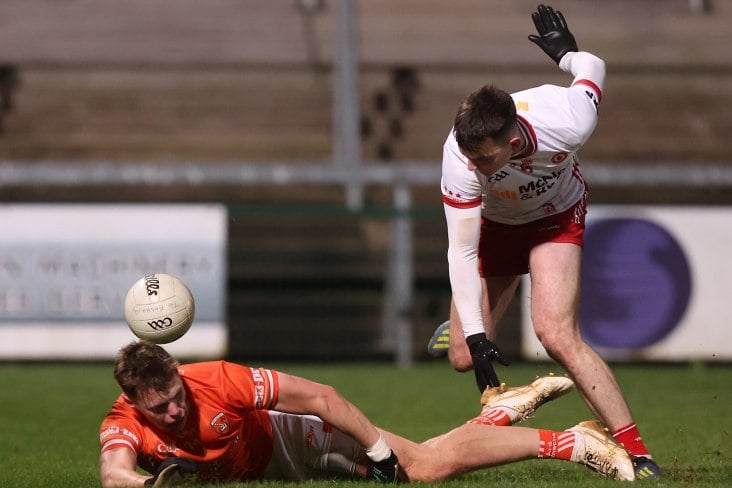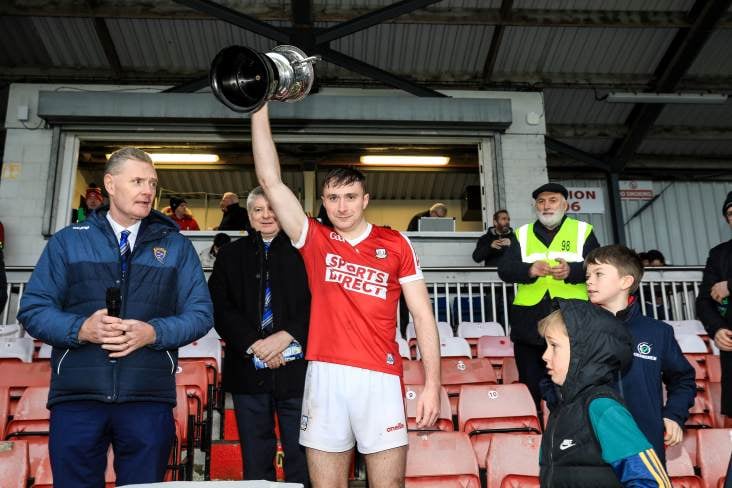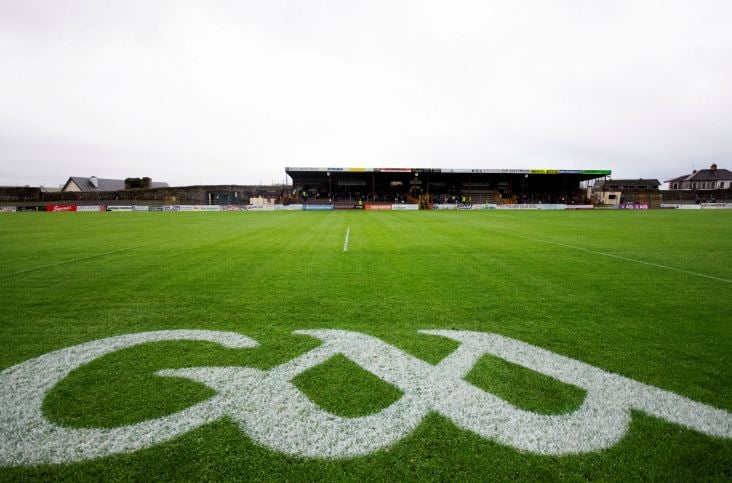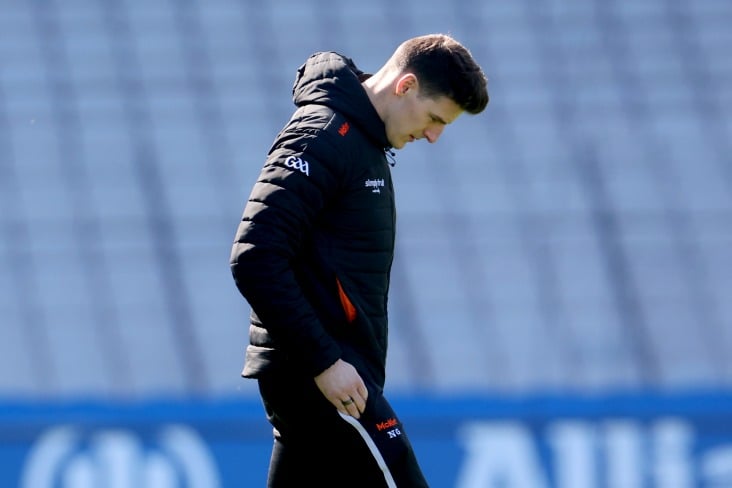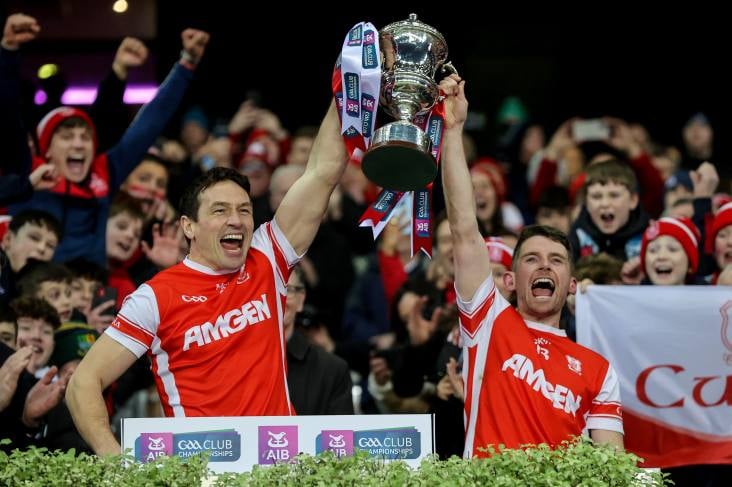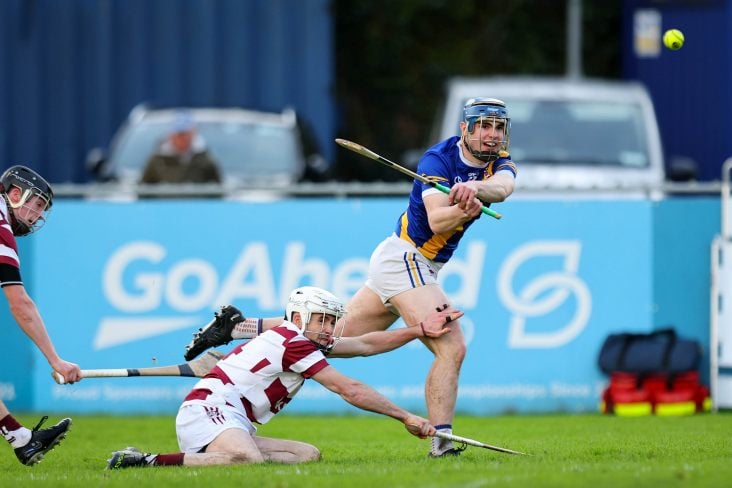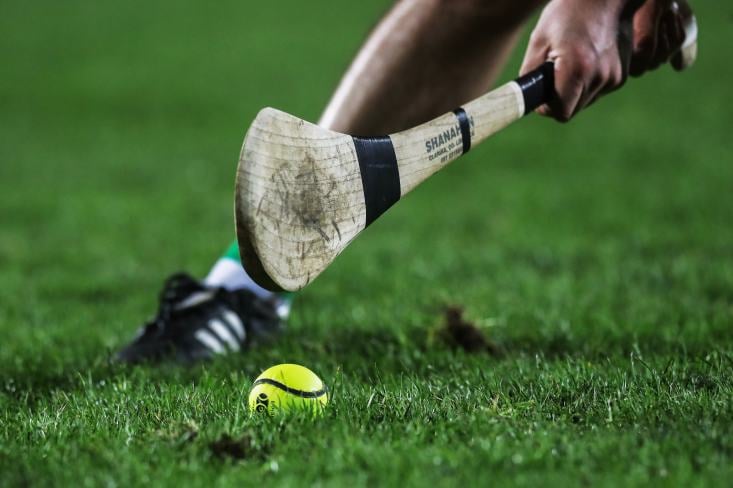On top of his game
December 30, 2010It was a big surprise. I could name a dozen others who could well have received the award. I was never involved with the GAA for the purposes of receiving any reward. The satisfaction and enjoyment I received from that involvement has been enough reward in itself. To receive the reward is the icing on the cake as regards my participation in the GAA."
Seamus McCluskey's modest acceptance of the John McAviney Memorial Award for Services to the GAA says much about the man and his passion for all things Gaelic.
He is particularly proud to have received the inaugural John McAviney Award given his long acquaintance with the late Ballybay man and his family.
"I knew John and indeed his father well and I know Martin McAviney (John's brother) very well too so that makes receiving the award all the more personal to me.
"John was a great Monaghan man, a brillant photographer, really out on his own and ahead of his time in many regards.
"I remember one time he tried to explain photography and cameras to me but I'm not mechanically minded and it was all double-dutch to me," the 83 years young gael explained.
In contrast to his travails regarding the workings of a camera and its use, embracing the rudiments of Gaelic games was ABC in its simplicity.
Ironically, his love affair with the GAA evolved in spite of the absence of any GAA family pedigree.
He had an uncle though, in county Down, who was a rabid GAA follower. On his many visits to the Mourne County on holidays, the young McCluskey would listen to his relations speak in glowing terms of the great skills of former 'thirties Monaghan star Christy Fisher.
"I always had a soft spot for Down and I ended up being great friends with Christy (Fisher) too and often sat beside him at matches in Croke Park.
"There was no tradition of following or being involved in the GAA in my family but my earliest memory of going to football matches goes back to when I was four years of age.
"I remember one day being brought to see a couple of big football matches by Father Victor Marron, the local curate in Emyvale in 1932.
"There were about 10,000 supporters there but I didn't know it at the time and it was donkeys' years later that I discovered that Cavan played Down in the Ulster junior championship final that year as the curtain raiser to the Cavan versus Armagh Ulster senior championship final the same day at Oriel Park in Monaghan town.
"Father Marron was a Cavan man but I had to cheer for Down in the final because my mother was born in county Down."
A veritable mine of memories and statistics, Seamus recalls that while Cavan had two sets of jerseys with them for the provincial finals of 1932, he says that they had a problem 'making up the numbers' in a matter of speaking.
"A rule came in around that time that players' jerseys had to be numbered. Cavan hadn't numbers on one set so they had to pin bits of cardboard with the numbers written on them onto the jerseys."
Like many another person embedded in the GAA for a long number of years, the Emyvale native admits that he wasn't a particularly good player himself.
"I wasn't much good and whenever I did feature on a team, it was normally as a substitute.
"I started playing football in St. Macartan's College. I remember being a sub in 1946 when the 'Sem' played against St. Pat's, Armagh, Iggy Jones etc, in the McRory Cup.
"We lost by 1-2 to 4-17 and needless to say it was one game that I didn't want to be brought on!
"I remember as I was coming off the field, one of the crowd with the St. Pat's team asked me was I a sub with the 'Sem'. When I said I was, he said 'you must be damn bad!'
After completing his Leaving Cert at the 'Sem', Seamus went to Dublin where he proceeded to study to be a primary school teacher at St. Pat's Training College in Drumcondra.
"I packed my jersey and the rest of my football stuff into a suitcase but didn't take them out of it once. I was only 5'6" and too light to make it as a player.
"In those days, someone with that sort of physique was taking their lives into their own hands and, for me, life preservation took priority!"
And so apart from playing a few times as a corner back with Emyvale and being presented - "out of pity" - with a Dr. Ward Cup medal in 1955, Seamus hadn't much to show for his days togging out.
For all his days of frustration and unfulfilled dreams as a player, Seamus never once lost his gra for the GAA.
Indeed, his passionate interest in the Association grew and grew as he began his working life and settled down to family life on his return home to Emyvale in 1948.
The post-war years saw tough times visit rural Ireland and the twin ravages of a poor domestic economy and emigration helped see to it that Emyvale was without a GAA club in '47 and '48; this despite the fact that the border club had just earlier bagged a junior double in 1945.
It was a case of 'cometh the hour, cometh the men' though and in 1949, Seamus helped re-form the Emyvale club.
"Jim Smith, a Cavan man and a customs officer locally, was the new Chairman and I was the Secretary. We had no Treasurer 'cause we had nothing to treasure!
"But pride in one's own native heath is what has driven the GAA forward all down the years and there was plenty of pride among the people of Emyvale and so things got up and running again from then on."
Husband of Emyvale native Anita (nee Corrigan) and proud father of Majella (now residing in Dundalk) and Finian (now residing in Carrickmacross), Seamus doesn't put a tooth in it when asked to assess the influence the GAA has had on the lives of generations of people in Ireland:
"For many, many people over the years, life simply wouldn't have been worth living without the GAA.
"The GAA has given so much to so many generations of people over the last 126 years; it has given them an opportunity to show their pride in their place and so much more besides."
Emyvale's recent successes in Monaghan and further afield have, understandably, given the long-time club stalwart a great deal of joy.
However in reflecting on the north county side's innings over the last couple of seasons, he suggests that success can come with a price:
"The club did tremendously well in winning out in Monaghan in 2009 and then going on and doing so well in Ulster too.
"But in some respects, all that success had an adverse effect on what happened thereafter with the club suffering a terrible toll of injuries, especially long-term injuries partly due, I'd say, to the long drawn out county and provincial campaigns.
"In 2010, the club started off the year short ten first teamers from their 2009 line out and that stretched the club's resources to the limit.
"You'd have to say though that Emyvale is strong enough now to withstand such pressures on its resources because it has up to 75 adults playing football these times.
"The club's run in Ulster was terrific and the whole community really got behind the team. The success the players enjoyed certainly proved the point that if a team is going places, supporters will come out in their numbers and follow you."
Emyvale's strength in depth at adult level mirrors that of the county, Seamus opines. He feels there is a good well of talent in the county at present.
He is pleased that the days when the race for the Mick Duffy Cup was confined to the likes of Scotstown, 'blayney, Clontibret and Ballybay in the 'fifties have passed and that new forces have emerged in recent times.
"For the guts of 30 years you had no teams other than 'blayney, Scotstown, Clontibret and Ballybay winning the senior championship," Seamus reflects.
"Now you have teams like Magheracloone and Latton in the mix every year which is good for the championship and good for Monaghan football.
"Overall, I think the game is stronger in the county now than it was fifty years ago; the quality across the board is better and clubs are fielding more teams than ever before at the different grades."
Seamus is a mine of facts and figures relating to football in Ulster and further afield and his capacity to formulate age-old data and make even the most banal of statistics interesting is verging on the unique.
The long-since retired school principal was a key figure in the drafting up of programmes for the Ulster finals back in the seventies and was the resident Public Address announcer at St. Tighernach's Park, Clones for a number of years.
"I remember when the county won the Ulster senior championship for the first time in 41 years back in '79.
"I was the PA man for the final and I nearly fell off the roof of the dressing-rooms where I was perched with all the excitement of the match.
"That win (in '79) laid the basis for the great run in the 'eighties when we were regularly back in Ulster finals," adds the man who tutored 1979 Ulster SFC medallist Eamonn Murphy in Corracrin National School and who is credited - along with the late Paddy O'Rourke - with spearheading the genesis of underage coaching in the county.
Another few Murphys needed now perhaps?
"Certainly but there's still hope of a renaissance. I thought Banty did a great job and the players were unlucky not to have won the provincial championship.
"The players are still good enough and with a bit of luck they can make it in the coming year."
Remember where you read it first! Tweet
